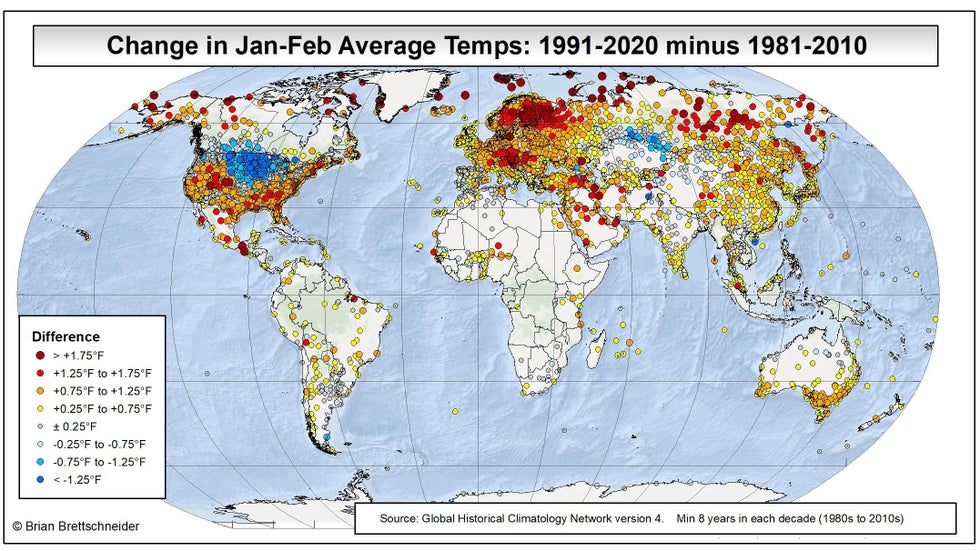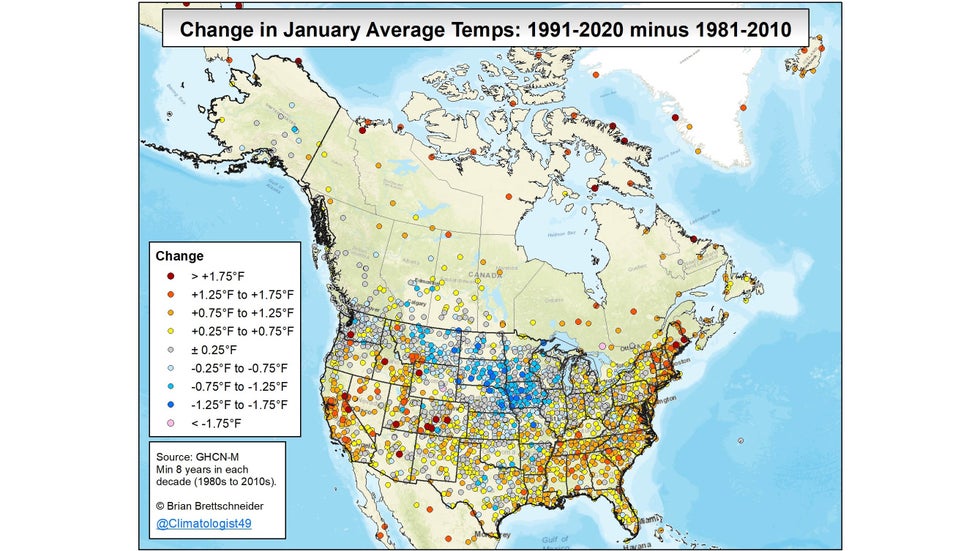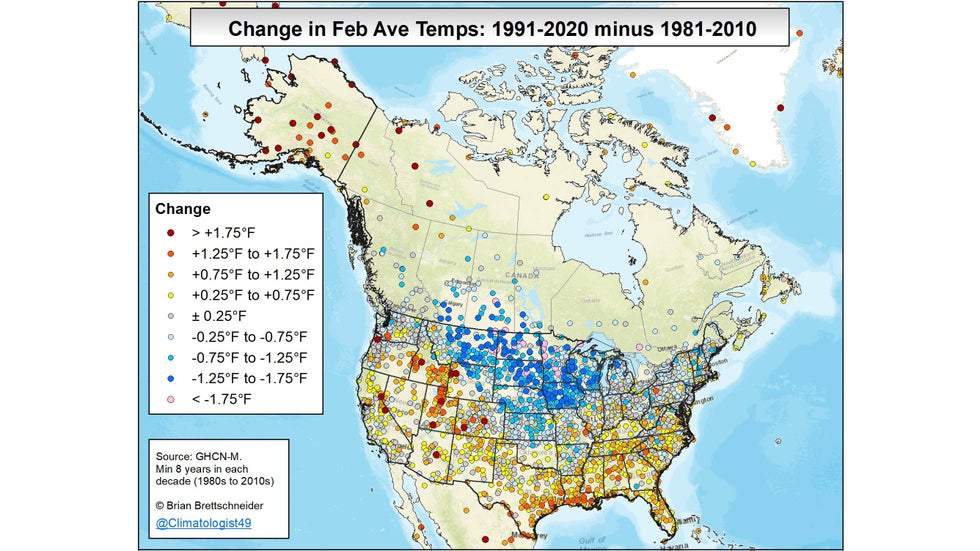Published: March 5, 2020
 This map shows the difference between the upcoming 1991-2020 climate averages and the current 1981-2010 climate averages for the combined January-February time period.
This map shows the difference between the upcoming 1991-2020 climate averages and the current 1981-2010 climate averages for the combined January-February time period.
It's no secret that the Earth is warming. Eight of the planet's 10 warmest years since 1880 have occurred in the last decade, and 19 of the warmest years have occurred since the start of the 21st century, according to NOAA's National Centers for Environmental Information (NCEI). But one portion of North America has cooled, relative to average, during January and February.
NOAA calculates climatological average temperatures in 30-year periods, with a new 30-year average every 10 years. The current climatological averages are based on the 1981-2010 period, which went into effect in 2011.
Now, it's almost time to switch to a new 30-year average for the period spanning 1991 to 2020, which NOAA will begin using in 2021.
With two months of 2020 already in the books, we can now see how the upcoming 1991-2020 climate averages will compare to the current 1981-2010 averages across the globe.
Dr. Brian Brettschneider, a climatologist at the University of Alaska Fairbanks, compiled the map above, showing the difference in average temperatures between those two 30-year periods for the combined January-February time period.
The 1981-2010 values were computed from the raw Global Historical Climatology Network (GHCN) version 4 (monthly) datasets – not the published NCEI values. To be included in the analysis, an observing station must have at least eight years of both January and February data in each decade (1980s, 1990s, 2000s and 2010s), Brettschneider said.
The yellow, orange and red dots on the map above show where January-February average temperatures have trended upward from the 1981-2010 period to the 1991-2020 period. While most of the planet is covered by those warmer shadings, one area is not like the rest.
Take a look at central North America, including portions of the upper Mississippi Valley, Northern Plains and northern Rockies of the United States. Widespread blue dots encompass this area, indicating that January-February average temperatures have trended downward from the 1981-2010 period to the 1991-2020 one.
Breaking it down further, Brettschneider also compiled maps for January and February separately, and the results are similar. The map below shows the difference in temperature between the two climate periods for January in North America. Portions of the upper and mid-Mississippi Valley, Northern Plains and northern Rockies will have lower average temperatures for the first month of the year in the upcoming 1991-2020 period.
 This map shows the difference between the upcoming 1991-2020 climate averages and the current 1981-2010 climate averages for the month of January.
This map shows the difference between the upcoming 1991-2020 climate averages and the current 1981-2010 climate averages for the month of January.
The following map shows the results for February. These temperature decreases between 30-year climate periods are even more pronounced in central North America, with some parts of the upper Mississippi Valley and Northern Plains averaging more than 1.75 degrees colder in the 1991-2020 period compared to the 1981-2010 period.
"Globally, this is by far the largest exception to the (warming) rule," Brettschneider said in a tweet, referencing the drop in 30-year average temperatures in January and February in central North America.
Most of the Earth will have warmer January and February average temperatures in the new 1991-2020 climate period when it goes into effect next year.
 This map shows the difference between the upcoming 1991-2020 climate averages and the current 1981-2010 climate averages for the month of February.
This map shows the difference between the upcoming 1991-2020 climate averages and the current 1981-2010 climate averages for the month of February.
The Weather Company’s primary journalistic mission is to report on breaking weather news, the environment and the importance of science to our lives. This story does not necessarily represent the position of our parent company, IBM.
The Weather Company’s primary journalistic mission is to report on breaking weather news, the environment and the importance of science to our lives. This story does not necessarily represent the position of our parent company, IBM.

No comments:
Post a Comment